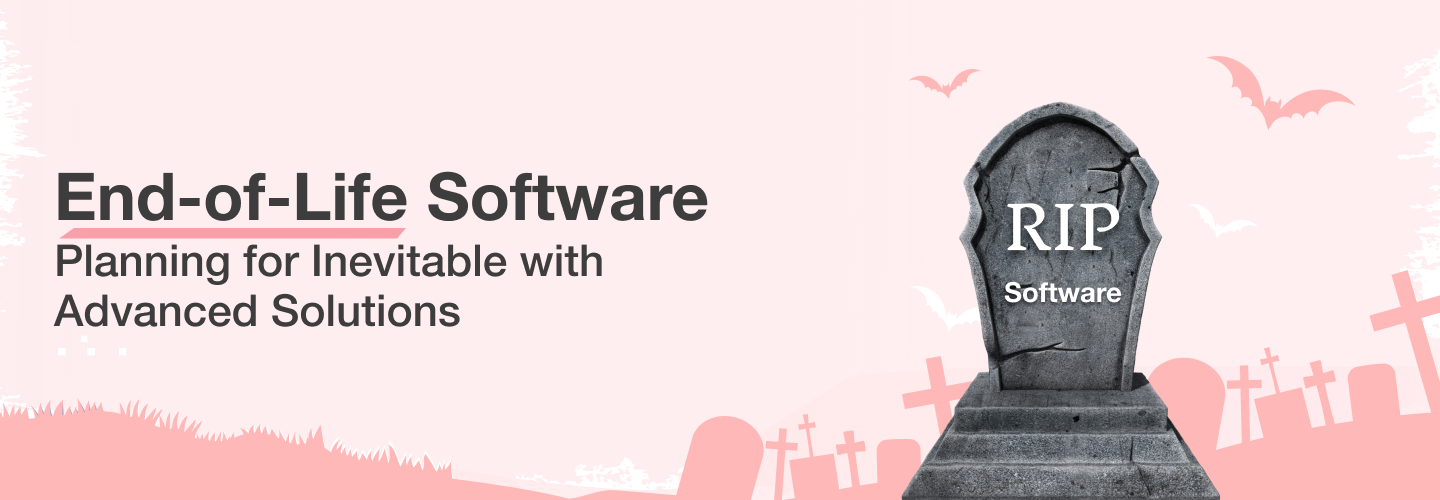
Microsoft has announced the end of support (EOS) for Windows Server 2012/2012R2, which will go into effect on October 10, 2023. After this date, these products will no longer receive security updates, feature updates, bug fixes, or technical support. SQL Server 2012 reached EOS on July 12, 2022.
Challenges for Enterprises after EOS
As Microsoft will stop providing security updates for Windows Server 2012, companies are at risk of running without security updates or paying for expensive extended support. In addition, here are other challenges we can foresee:
Security: Even though you have purchased extended support, it only covers “Important” and “Critical” updates for Windows Server, and only “Critical” updates for SQL Server. With an increasing number of ransomware attacks targeting enterprises, running applications on EOS is still highly risky.
Compliance: There is a risk of noncompliance with industry regulations.
Cost: Running applications on the EOS Windows Operating System significantly increases the operational cost. Customers have to isolate these applications behind firewalls and take other measures like whitelisting access, etc.
Cloud Adoption: New cloud-native technologies are difficult to adopt with EOS and legacy platforms. Even lift-and-shift for applications running on Windows 2012 and older can be difficult.
This is a great opportunity to improve security and performance while reducing costs by migrating EOS workloads to AWS while completely eliminating inevitable challenges instead of delaying them. Amazon Web Services (AWS), the world’s leading cloud service provider with a 40 percent share of the worldwide cloud infrastructure market, offers a robust environment for hosting applications, managing databases, and more.
In this blog, we’ll delve into five crucial tips for migrating to AWS effectively and efficiently.
1. Assessment is Key
Before diving into the migration process, conduct a thorough assessment of your current environment. Identify your applications, workloads, databases, and dependencies. This assessment will guide your migration strategy and help you determine which components are best suited for AWS. Some partners, such as Invenger Cloud, offer Fast Path assessments that can speed up this audit.
2. Choose the Right Migration Strategy
AWS offers multiple migration strategies, each suited to different scenarios. With our tremendous experience and expertise, our team can guide you through the migration with the right approaches for EOS workloads.
Our team can assist customers in upgrading the EOS operating system to the most recent version of Windows during the migration to AWS. Moreover, we can help customers who want to modernize their applications by using Windows containers. Finally, if your applications are strongly reliant on a legacy operating system, we have the option to decouple them from the OS and port them over to a newer version of Windows without modifying the source code.
3. Optimize for Security, Compliance, and Cost
Ensure a smooth migration while maintaining security and compliance. Implement the principle of least privilege, use Identity and Access Management (IAM) roles, and encrypt data in transit and at rest.
AWS provides cost optimization tools to ensure you’re only paying for what you use. Leverage services like AWS Trusted Advisor or third-party services like iOps, to identify cost-saving opportunities and employ Auto Scaling to match resources to demand.
You may also want to consider leveraging an AWS Optimization and Licensing Assessment (OLA) to help optimize license and compute costs before and after migration. If you are a Microsoft user, you may have existing licenses for your MS workloads/products/services that are costing you money. You can either bring your own license and run the MS service on AWS, or you can migrate to a comparable AWS service (e.g., from MS SQL Server to Amazon Aurora PostgreSQL).
4. Include Testing and Validation in your Process
Thoroughly test your applications and workloads after migration to identify and address any issues. AWS provides tools like Amazon CloudWatch for monitoring and AWS Config for tracking changes to your resources.
Also, be sure to leverage AWS’s global infrastructure to enhance your disaster recovery and high-availability strategies. Services like Amazon S3 and Amazon RDS offer built-in redundancy and data durability.
5. Choose the Right Partner for Migration
Migrating to AWS is a significant endeavor that can be made smoother with the right partner. Consider these factors when choosing a partner:
Expertise and Experience: Look for partners with a proven track record in cloud migration and a deep understanding of AWS services. Partners that are AWS Premier Tier Services Partners are a good place to start.
Scalability: Select a partner capable of accommodating your organization’s growth and changing requirements.
Customization: Your migration plan should align with your specific goals. A good partner will customize solutions to your needs.
Support: Ongoing support post-migration is crucial. Ensure your partner provides continuous assistance and optimization. Migration is rarely one-and-done, so select a partner that is with you for your entire cloud journey.
As Microsoft’s support for Windows Server 2012 is around the corner, businesses face a pivotal moment. Migrating to AWS not only addresses this challenge but also opens doors to enhanced security, scalability, and innovation.
By following these essential tips, you can streamline your migration process, mitigate risks, and ensure a successful transition to the cloud. Remember, thorough planning, careful execution, and ongoing optimization are the keys to mastering your migration journey to AWS.


